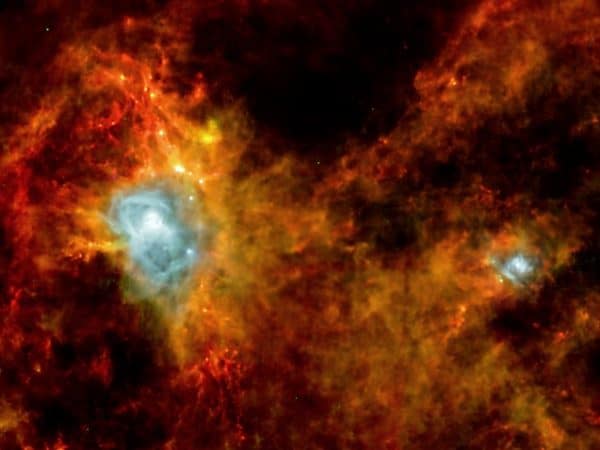
 Have Scientists figured out a mini Big Bang that started the Solar System?
Have Scientists figured out a mini Big Bang that started the Solar System?
An international team of researchers has used evidence from meteorites to conclude that the cosmic event which birthed our Solar System was likely a low-mass supernova.
The Solar System came into existence 4.6 billion years ago, some 9.2 billion years after the Big Bang got the whole universe up and running. And astronomers have theorized that before collecting into the masses we know today, namely, the Sun, the planets, moons and other space objects, the Solar System existed as nothing more than a giant molecular cloud of gas and dust. Apparently, this giant cloud – some 65 light years in diameter – was just waiting for the right moment to start gravitationally condensing and collapsing into its centre, eventually forming a hot core called a protostar, which would later, through increasing mass and increasing pressure, become the Sun.
But what actually sparked the process? Scientists have long theorized that a supernova could be the cause. When a star has reached its final phase of existence, it gives off incredible amounts of energy in an explosive display, often outshining entire galaxies in its brilliance. Such a release of energy from somewhere nearby the Solar System’s molecular cloud would be enough to trigger the creation of dense areas within the cloud, which, over time would pull in more material, thereby getting the show started.
But until now, the supernova theory of the Solar System’s origin had yet to be proven. The key, say the new study’s authors, lay in finding evidence out there in space of short-lived radioactive nuclei which would have been produced by such a supernova. So, the team of researchers looked to meteorites floating around space, which are essentially space debris left over from the dawn of the Solar System and, the theory goes, would thus bear traces of such short-lived radioactive nuclei from a supernova.
Through computer modelling of different types of supernovae, the researchers found that the abundance of isotopes like Beryllium-10, Calcium-41, Palladium-107 and a few others in meteorites could best be explained by the explosion of a particularly low-mass supernova.
“Identifying these ‘fingerprints’ of the final supernova is what we needed to help us understand how the formation of the solar system was initiated,” says Professor Alexander Heger of the Monash School of Physics and Astronomy in Melbourne, Australia, and study co-author. “The fingerprints uniquely point to a low-mass supernova as the trigger.”
To astronomers and those concerned with the history of the universe, space debris like meteorites and asteroids are veritable floating time-capsules, as they bear the marks of the first days and hours of the formation of the Solar System. The current NASA-led OSIRIS-REx mission, launched on September 8th of this year, aims to be the first to send a spacecraft to orbit an asteroid (this one is called Bennu) and then bring back to Earth samples (about 60 grams of surface material) for further study. The mission is aided by a laser altimeter provided by the Canadian Space Agency (CSA), which will be used to map the surface of Bennu in preparation for the sample collection.
Leave a Reply
You must be logged in to post a comment.




 Share
Share Tweet
Tweet Share
Share




Comment